Extraordinarily, for fifty-eight and three-quarters years, Adri has graciously shared her life with a cranky, cantankerous, egocentric curmudgeon. She has supported, encouraged, and fostered my eccentric and sometimes self-indulgent pursuits of natural history and microscopy, not to mention philosophy. Over the years, she has been my best critic and staunchest defender and helped me retain my equilibrium by sharing the joys and pains of a very complex life.
She has always liked my photographs and has been honest enough to tell me which ones succeed and which ones don’t.
I have selected twenty-seven images as a little bouquet of tribute and an expression of my cranky love. Some of the images she has seen; others not. Rubies, diamonds, and periodots, they are not; however, I count them as small treasures which are the products of my own hands.
I will tell you the composition of the crystals in each image and may indulge in a bit of fanciful description now and them.
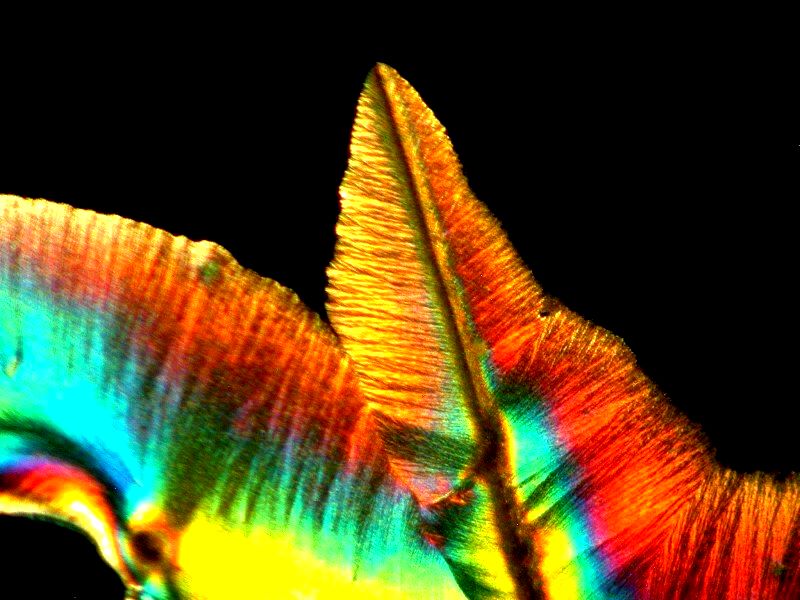
A mixture of Ascorbic acid (Vitamin C) and Visine eye drops with polarization.
Clearly, these are the tips of the feathers of an exotic bird found only on the planet Eros.

A tiny fragment of a calcareous plate of the very strange little sea cucumber, Psolus, placed in hydrochloric acid produced some wonderfully whimsical crystals and this was one I quite liked. For some inexplicable reason, it immediately made me think of a dancer.
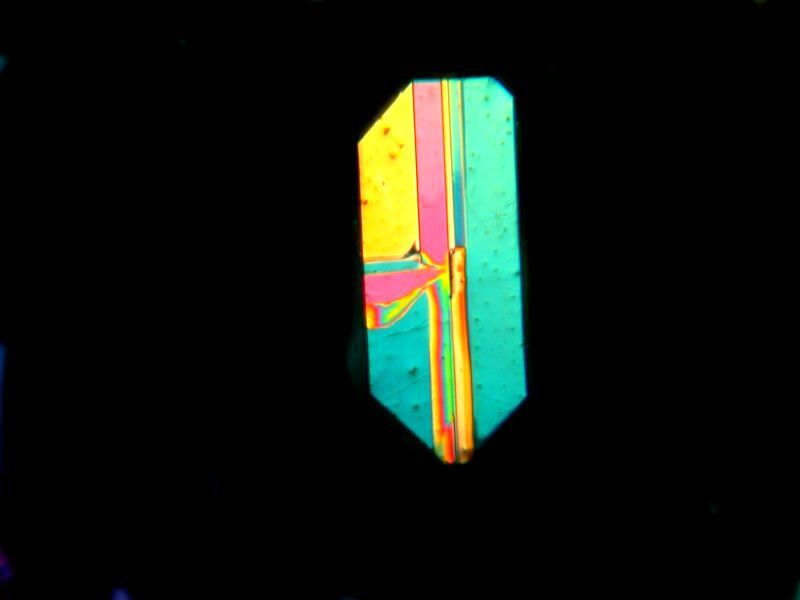
This shows you just how intriguing a single slide can be, because this is from the same one as previous image. The geometrical character especially appeals to me from the influence of that period when I was exposed to that dangerous discipline of mathematics, from which influence, fortunately, I have never escaped.
Sometimes images can provoke a chain of thought that could lead to the creation of an entire mythic world. This next image is such a one, for me, as it suggests an entrance into another dimension, a whole new universe.
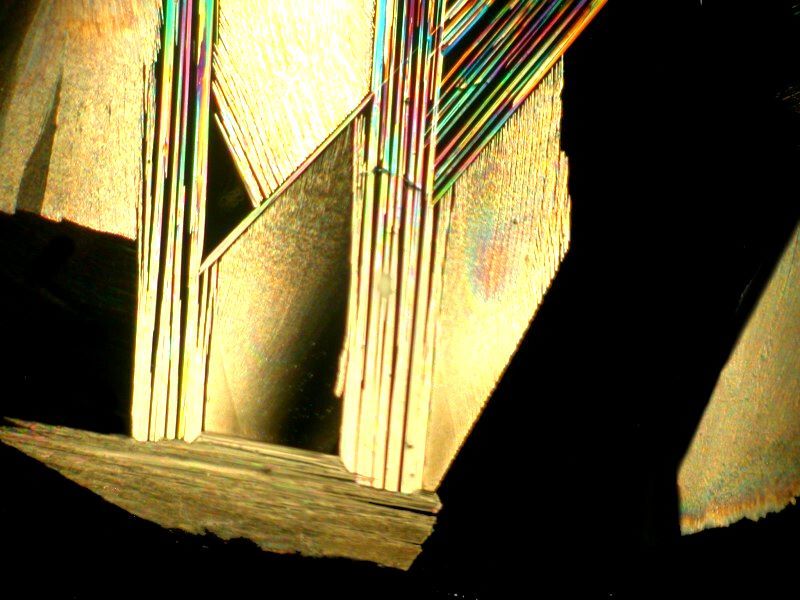
This is a mixture of Urea and Ascorbic acid under polarization.
In the next image, we are somehow back in a world of exotic feathers.
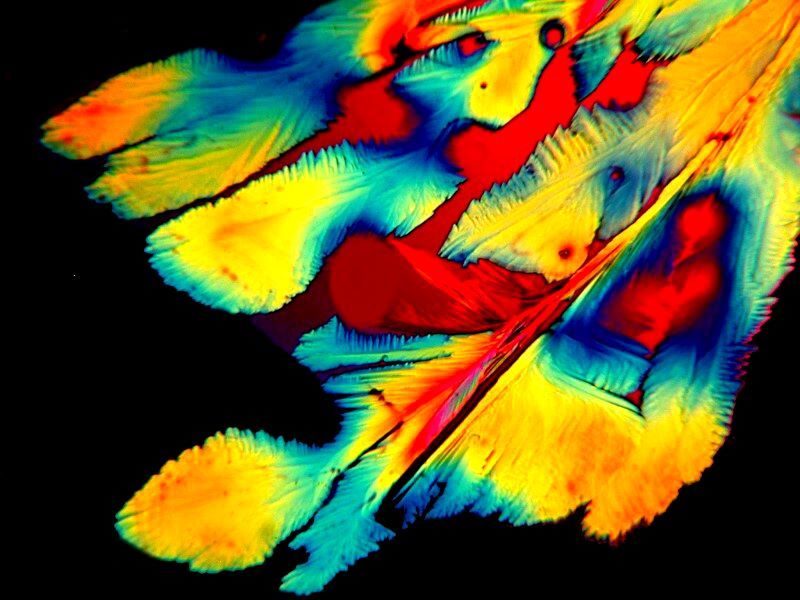
This is a complex mixture of Sanafitil (an antifungal liquid), the biological stain Eosin Y, and Ascorbic acid. (Polarized)
Sometimes (actually for me, over and over), I find surprising results from my eccentric experiments. Some, as is true in this case, exceed my descriptive imagination and, in this instance, all I can come up with is that there appears to be some kind of elaborate, incomplete network.
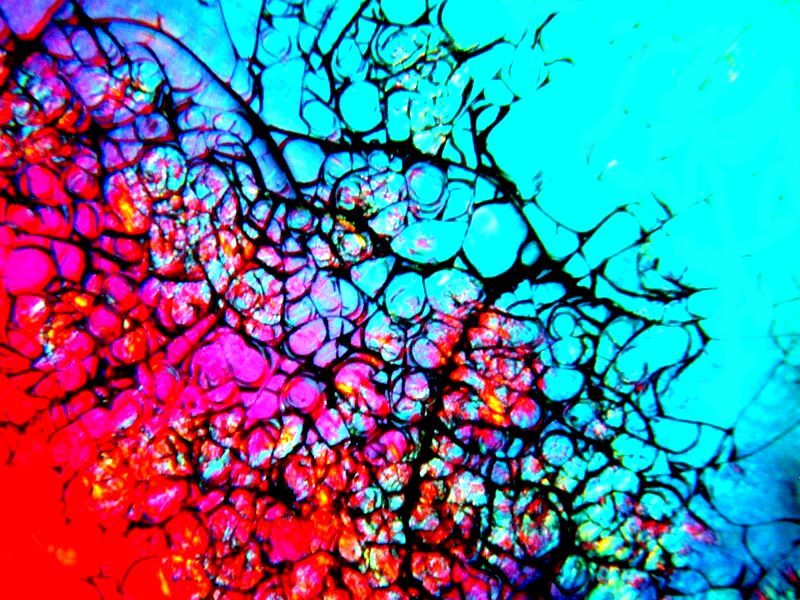
This is a mixture of the sweetener Stevia and Ascorbic acid. (Polarized)
At other times, an image can provoke all manner of wild and interesting associations. This next image is of that type. I can see it as the tip of the prow of some immense alien spacecraft or, alternatively, as an aerial view of an exclusive resort in a lagoon in a galaxy far, far away.
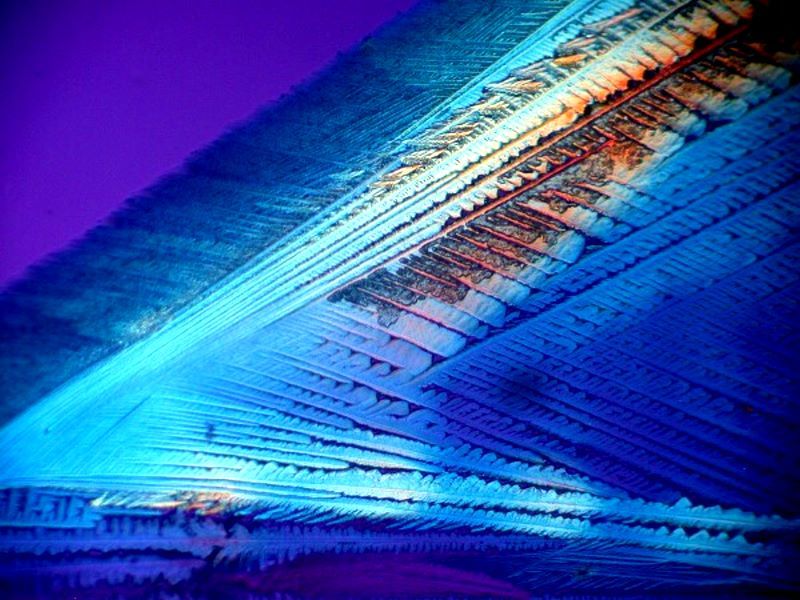
A mixture of Copper sulfate, Metformin (a diabetic medication), and Stevia. (Polarized)
Next we have what looks to be rather like some kind of umbrella plant, but a rather useless one, since it’s full of holes.
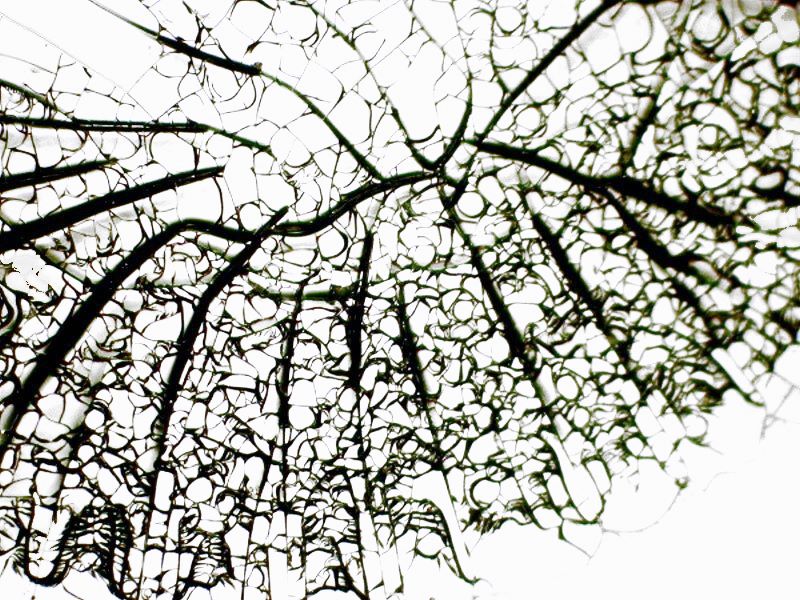
A mixture of Copper sulfate and Stevia. (Brightfield)
Now, back to a bit of geometry with perhaps a touch of Rothko.
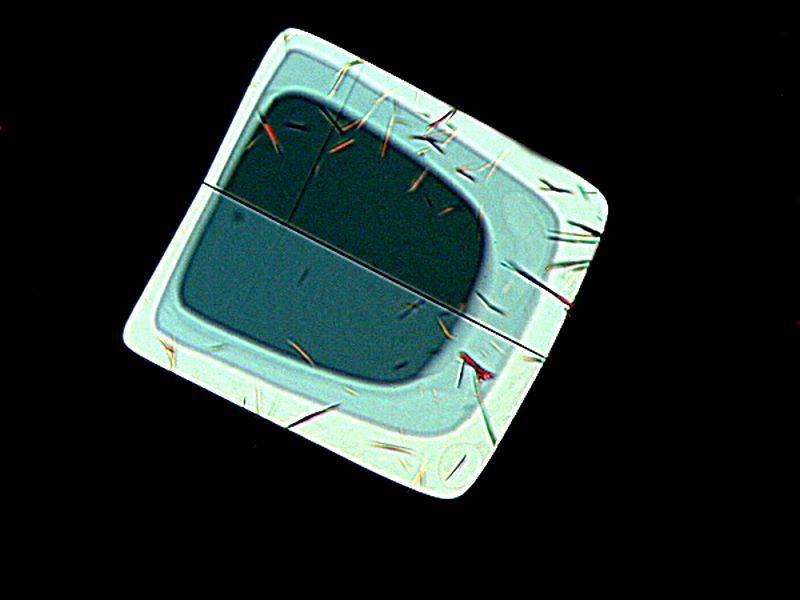
A mixture of Magnesium chloride and the biological stain Safranin O with a black background added. Magnesium chloride is wonderful and frustrating to work with. It produces many small, splendid geometric crystals, which under medium magnifications, are quite striking. Frustrating, because it’s hydrophilic and will pull water out of the air and change form as you are watching/. So, if you find a display you like, you need a quick camera trigger finger.
On occasion, I try a combination with few expectations and, in spite of me, it produces spectacular results. This has been the case with a mixture of Nickel sulfate and Urea. I don’t know what to say about this image except that I quite like it. (Polarized)

The next image creates the impression of a lattice that is still in the process of developing.
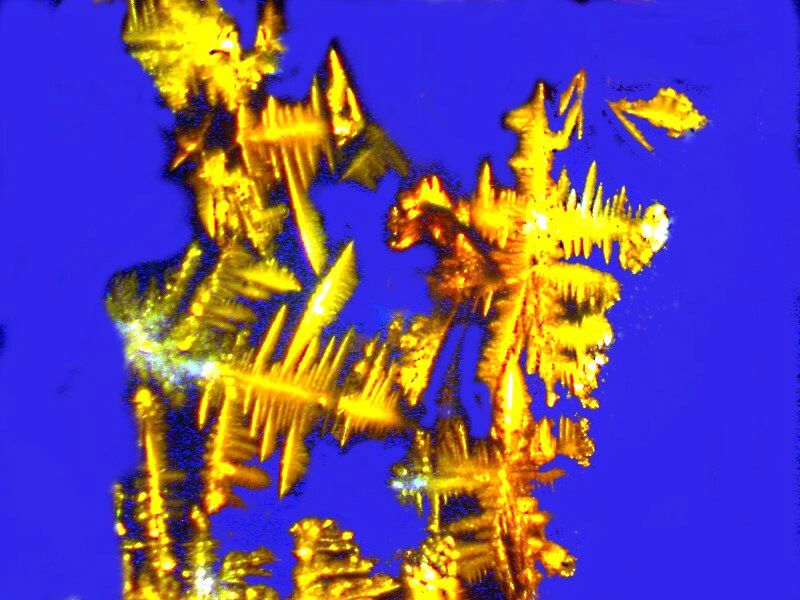
A combination of Orange G (a biological stain), Bromoseltzer, and Ascorbic acid. (Polarized)
Working with crystals, serendipity is a constant consideration which one can’t really take under consideration–perhaps a slip in putting on the cover glass creates some bubbles or perhaps a tiny particle gets on the slide unnoticed. Whatever the case, one can get some delightful results that, unfortunately, may not be reproducible. The image below is a superb example. I happened to be typing this up on Saint Patrick’s Day and I was talking to friend of mine long distance and sent him this image. He remarked that it was very appropriate for the day since it reminded him of a shamrock.
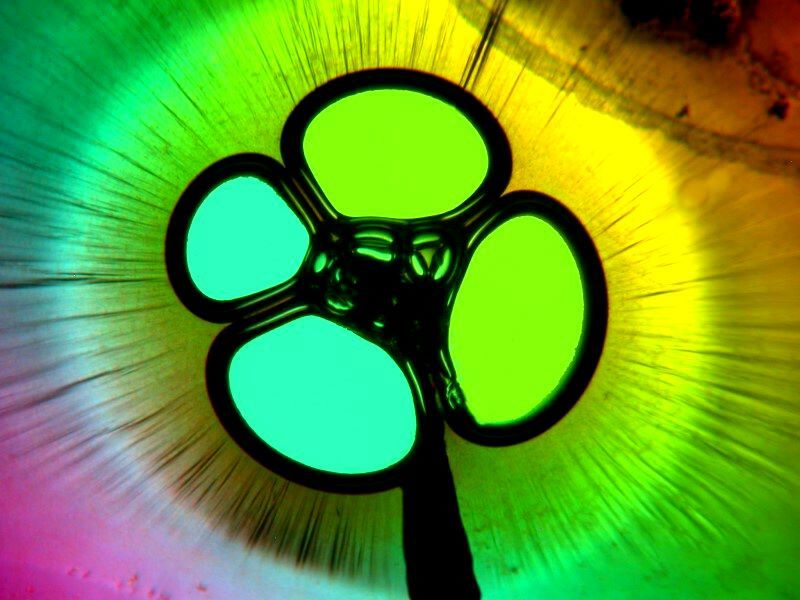
A mix of Silver nitrate and Ascorbic acid. (Polarized)
If we apply the invert function we get a colorful carnival image.
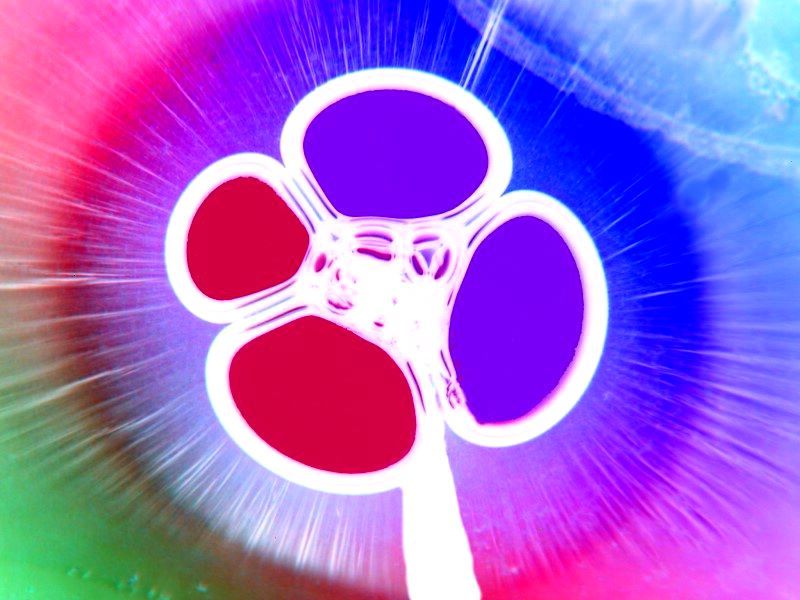
From time to time, we get an image that immediately and directly reminds us of something very familiar as is the case with my chemical rocking horse below.
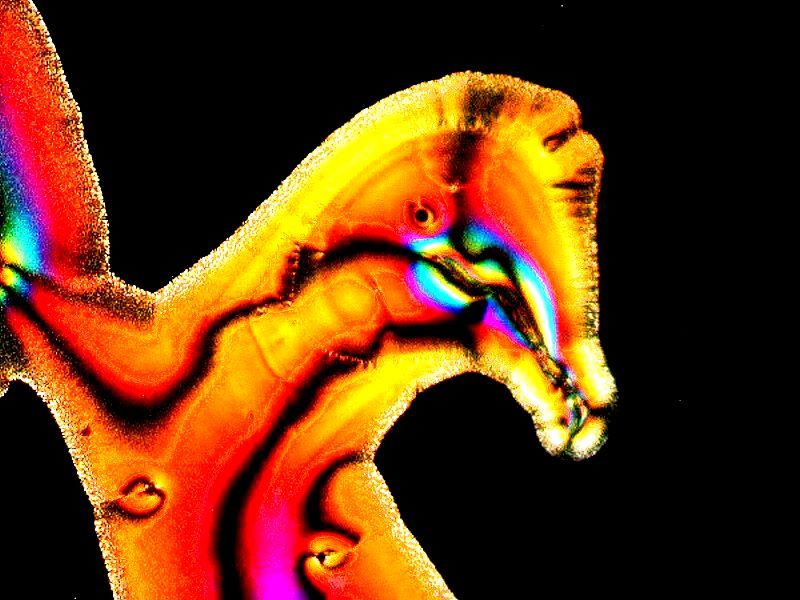
An odd mixture of Anbesol (toothache medicine), Boric acid (eyewash among other things), and Stevia (a natural sweetener from a South American bush). (Polarized)
Sometimes, completely weird combinations produce something very beautiful and dynamic.
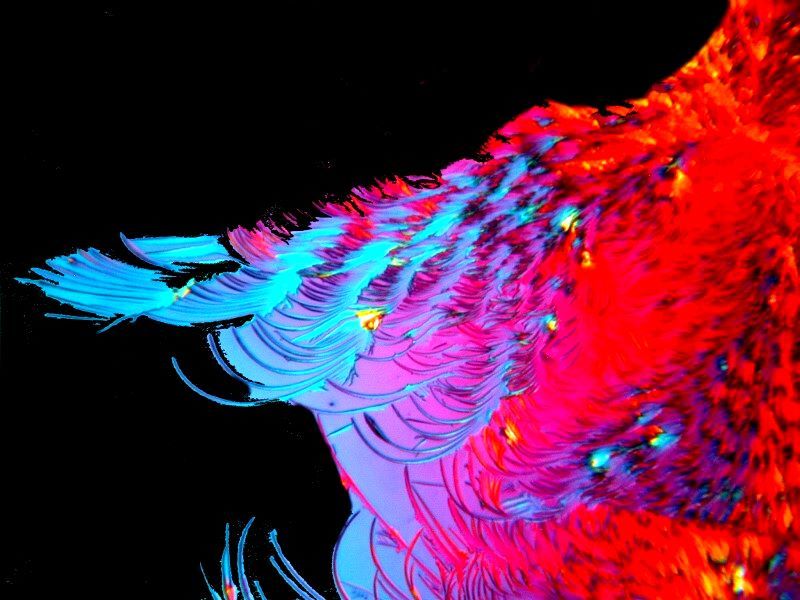
The introduction of improbable elements in the center of a drop of solution can create remarkable effects around the edges. Here we have a drop of Ascorbic acid mixed with a generic toothache medication to which I added a portion of a fish bone and a tiny fragment of a sea urchin spine–I told you it was a weird combination! The Ascorbic acid reacted with the calcareous material in the sea urchin spine and who knows what role, if any, the fish bone played.
Now, let’s look at another instance of crystals mimicking living beings, this time a butterfly.
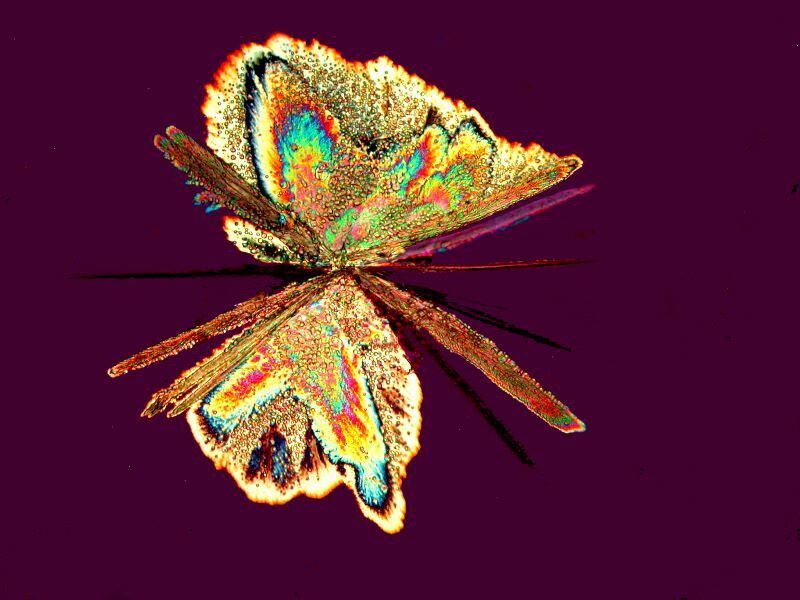
Another rather strange mixture–Ascorbic acid, Prozac, and Sanafitil (a liquid anti-fungal agent).
Yet another geometry lesson.
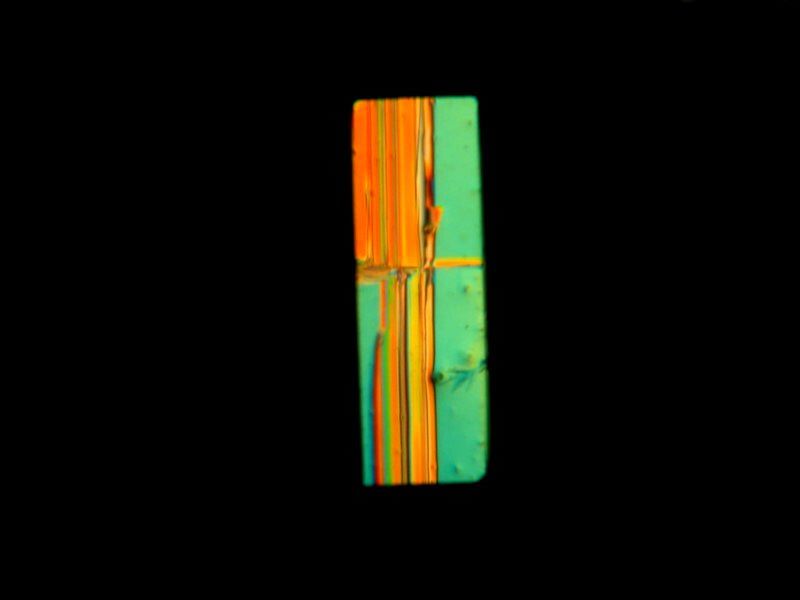
A mixture of a fragment from a sea urchin spine, but this time in 1% hydrochloric acid.
“Double, double toil and trouble;
Fire burn and caldron bubble.” –from Macbeth
This is a tiny filament of a calcareous marine alga in 1% hydrochloric acid which generated lots of bubbles all over the surface of the filament. Here I applied the invert function to the brightfield image.

Some substances do have a limited sort of predictability and one of them is the biological stain, Nigrosin. Very often, Nigrosin, in the process of drying, will produce a crackled surface which frequently becomes intricately interesting when mixed with other reagents.
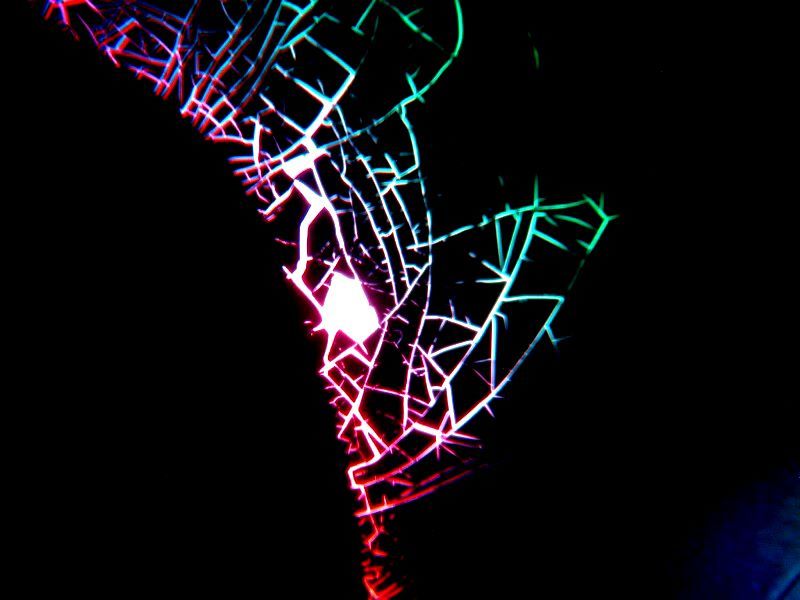
In this instance, the Nigrosin was mixed with Ascorbic acid and Silver nitrate. (Polarized)
Sometimes, one encounters an image where the blending of colors an textures is overwhelming; such is the case here.
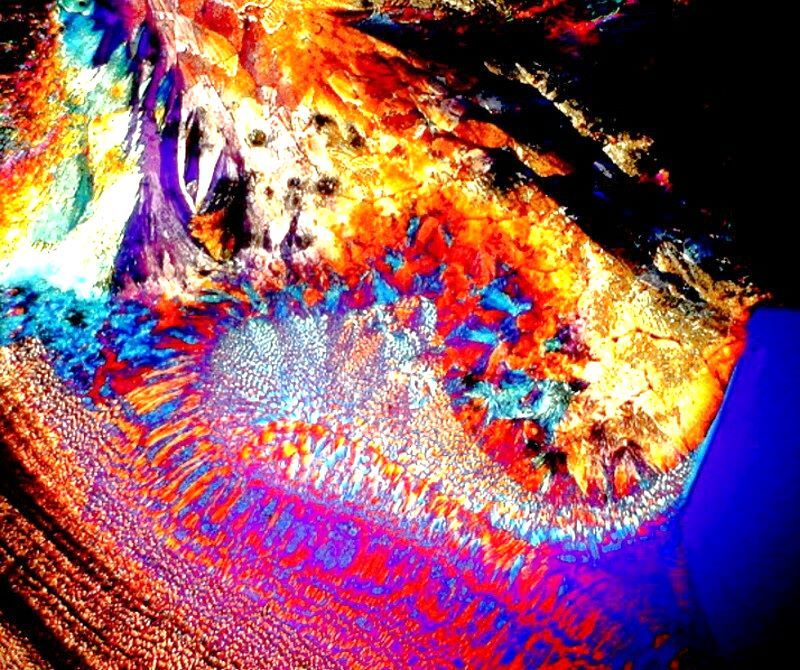
A blending of Ascorbic acid, Codeine sulfate, Metformin, and Stevia (Polarized)
Once again, let’s go back to crystals imitating the animal world and I am pleased to present to you a lovely, other-worldly bird, first in brightfield and then as an inverted image.
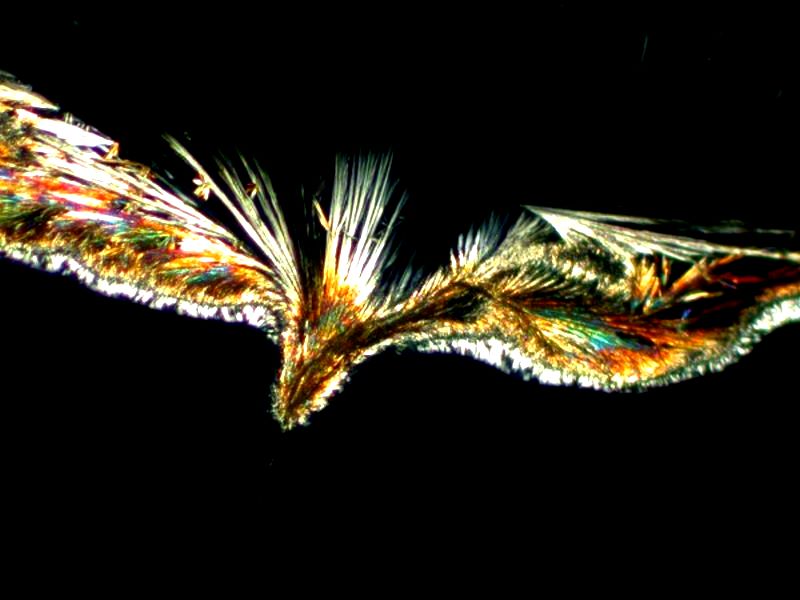
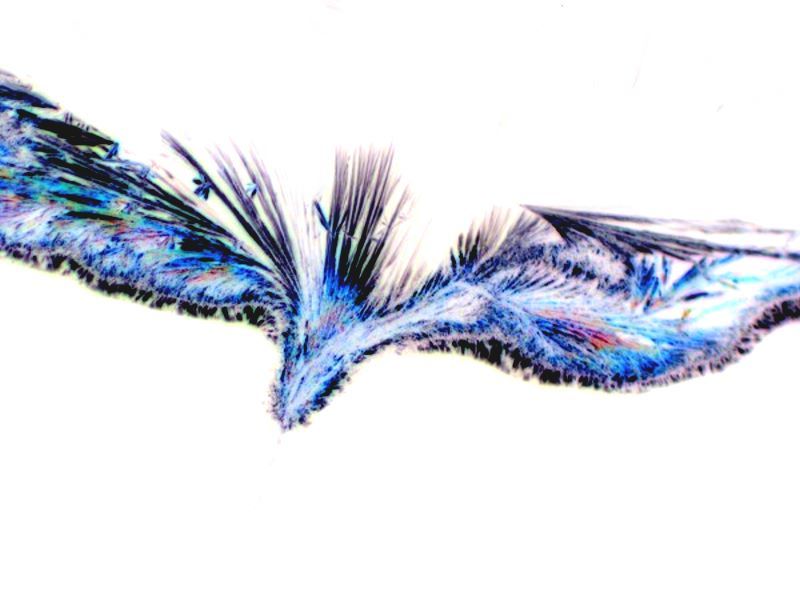
Prozac and Metformin.
Having lived in the 20th Century, we can’t omit abstractionism and crystals can provide us with some amazing examples. I am quite intrigued by the one below.
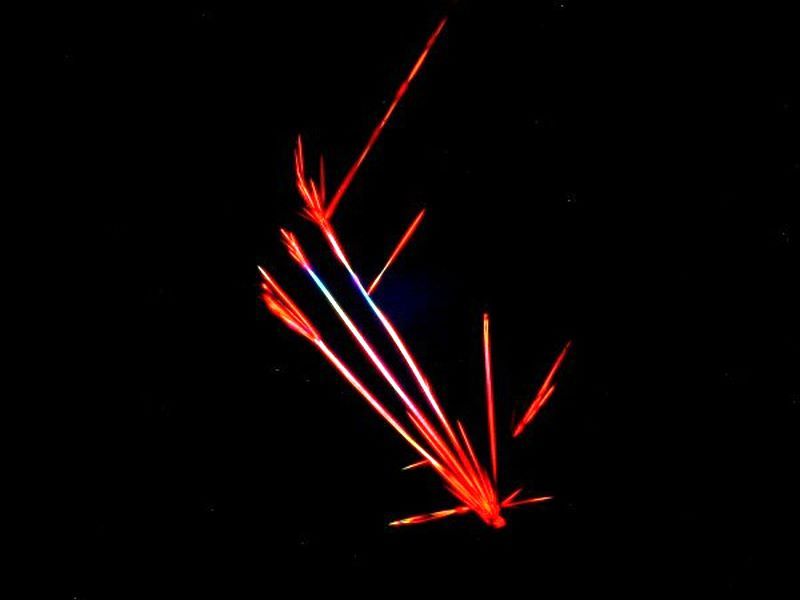
A mix of Sanafitil and the biological stain Safranin O. For some reason, it seem to me botanical in nature, whereas the next image is definitely cosmic in character.
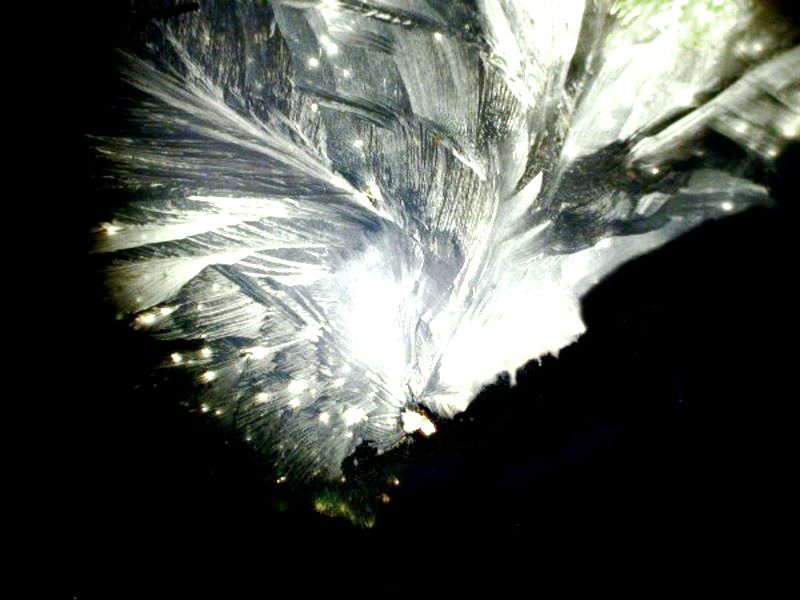
Vanillin, Sal Soda, Ascorbic acid. (Polarized)
Finally, no bouquet would be complete without some diatom arrangements. I’ll show you two examples, each in brightfield and then inverted. I can only look on in awe at the dedication and marvel at the patience which was necessary to produce such extraordinary beauty.
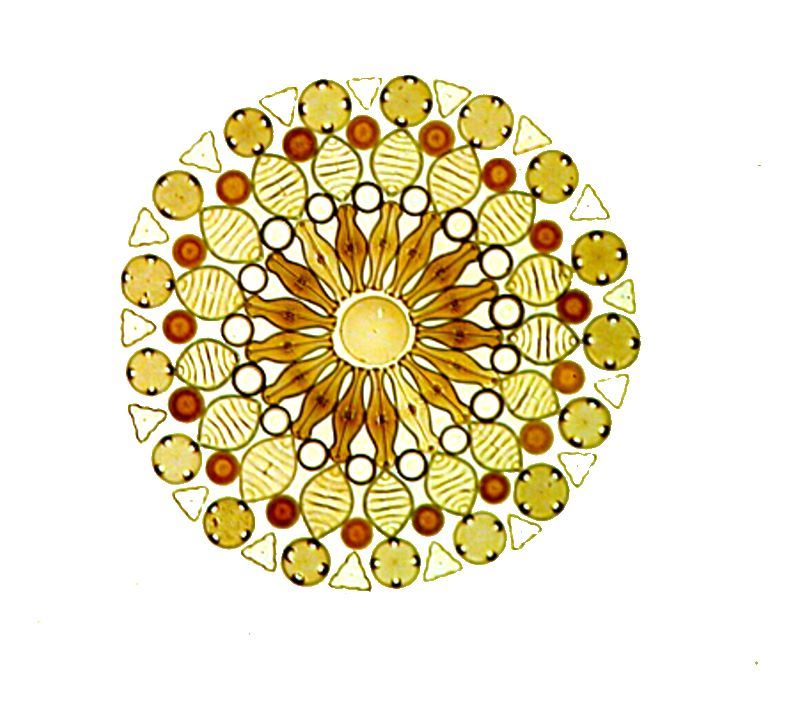

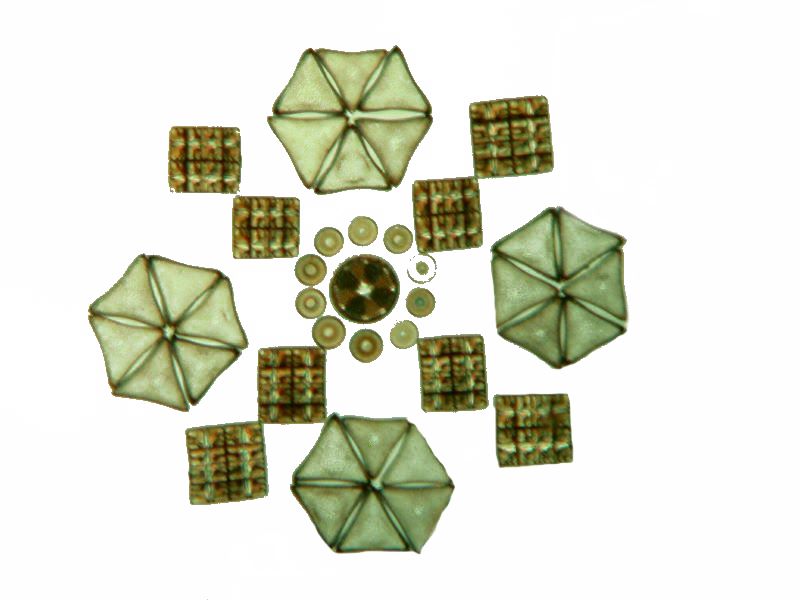
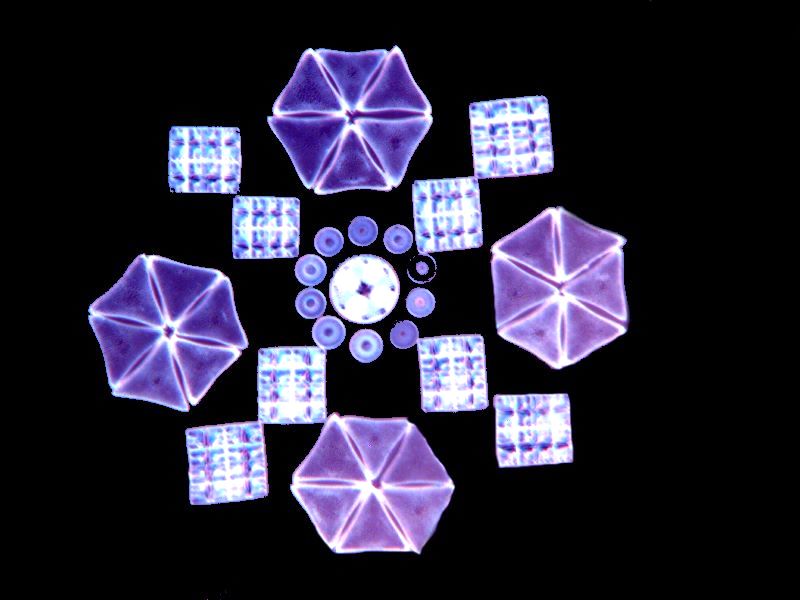
So, my dear Adri, here is my small bouquet offered as a tribute on your 80th birthday accompanied by the hope that you will yet experience much joy and quiet pleasure.
All comments to the author Richard Howey are welcomed.
Editor's note: Visit Richard Howey's new website at http://rhowey.googlepages.com/home where he plans to share aspects of his wide interests.
Microscopy UK Front
Page
Micscape
Magazine
Article
Library
© Microscopy UK or their contributors.
Published in the April 2019 edition of Micscape Magazine.
Please report any Web problems or offer general comments to the Micscape Editor .
Micscape is the on-line monthly magazine of the Microscopy UK website at Microscopy-UK .
©
Onview.net Ltd, Microscopy-UK, and all contributors 1995
onwards. All rights reserved.
Main site is at
www.microscopy-uk.org.uk .